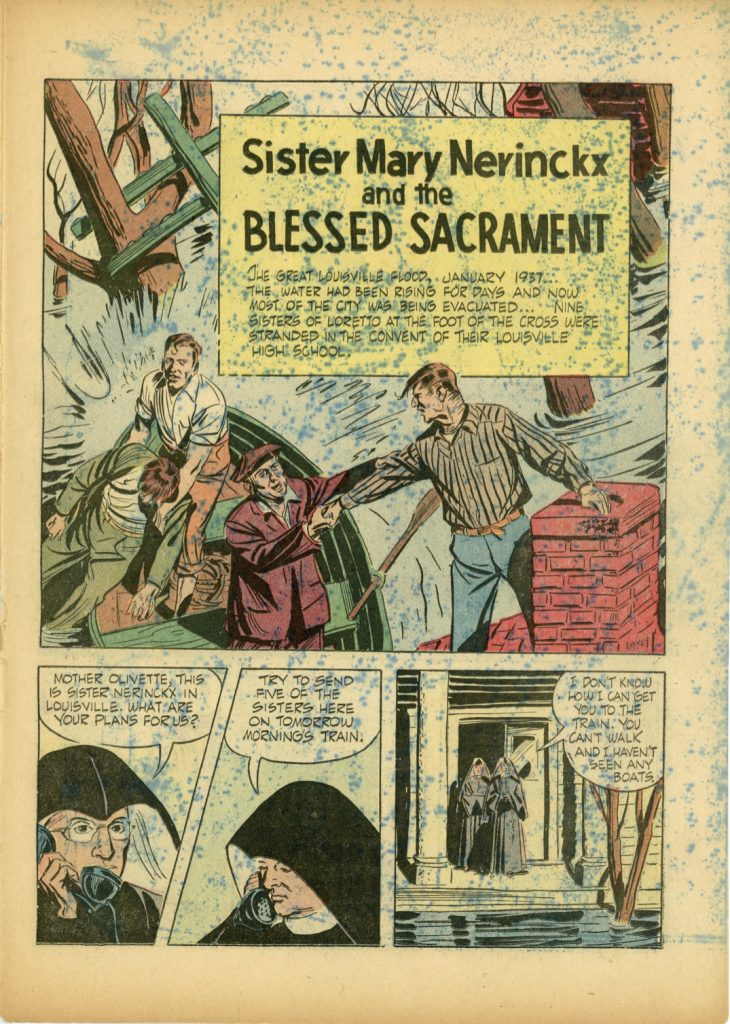The Sisters of Loretto and the Great Flood of 1937
Posted on May 24, 2018, by Loretto Community
By Laurel Wilson
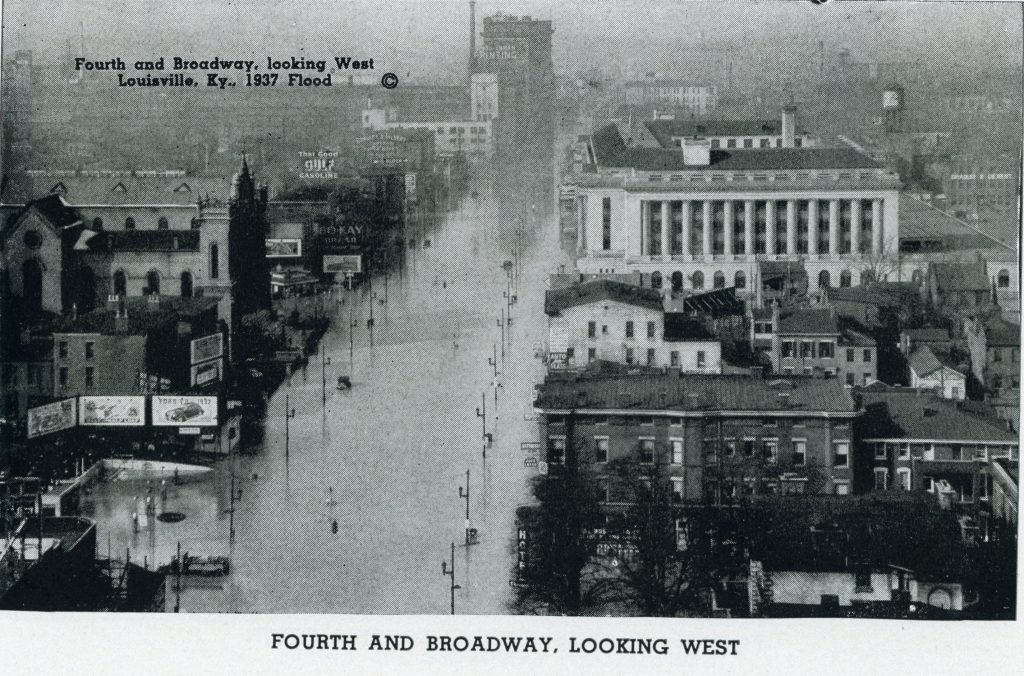
Sister Nerinckx Blincoe SL, Superior of Loretto High School in Louisville, found herself in a predicament on Saturday, January 23, 1937. The Ohio River was flooding at record levels, and Louisville had been hit with 15 inches of rain in 12 days. Between 60-70 percent of the city was submerged, and tens of thousands of people were trying to evacuate. Among them were about 30 Sisters of Loretto, the majority of whom were marooned at their campus just blocks from the river on West Broadway. There were also a handful of Loretto sisters at St. Benedict’s Parochial School on Osage Avenue, further from the river but still within the flooded area.
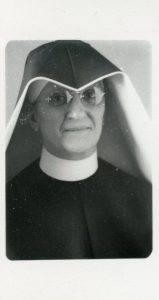
On the morning of January 23, Sister Nerinckx called Mother Superior Olivette Norton at the Loretto Motherhouse, who told her to get the sisters on the train to Loretto. However, boats could not be found in time to catch the train (which it turned out was cancelled anyway), so Sister Nerinckx secured hospitality for the sisters elsewhere until transportation to the Motherhouse could be arranged. That afternoon, the sisters at Broadway and St. Benedict’s sailed away in rowboats and canoes to various places that agreed to take them in, including the Ursuline Convent, Good Shepherd Convent, and St. Joseph Infirmary, run by the Sisters of Charity. A few sisters had relatives in Louisville and stayed with them.
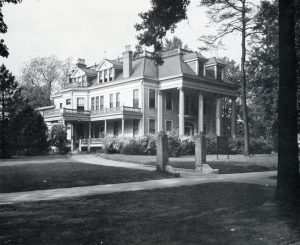
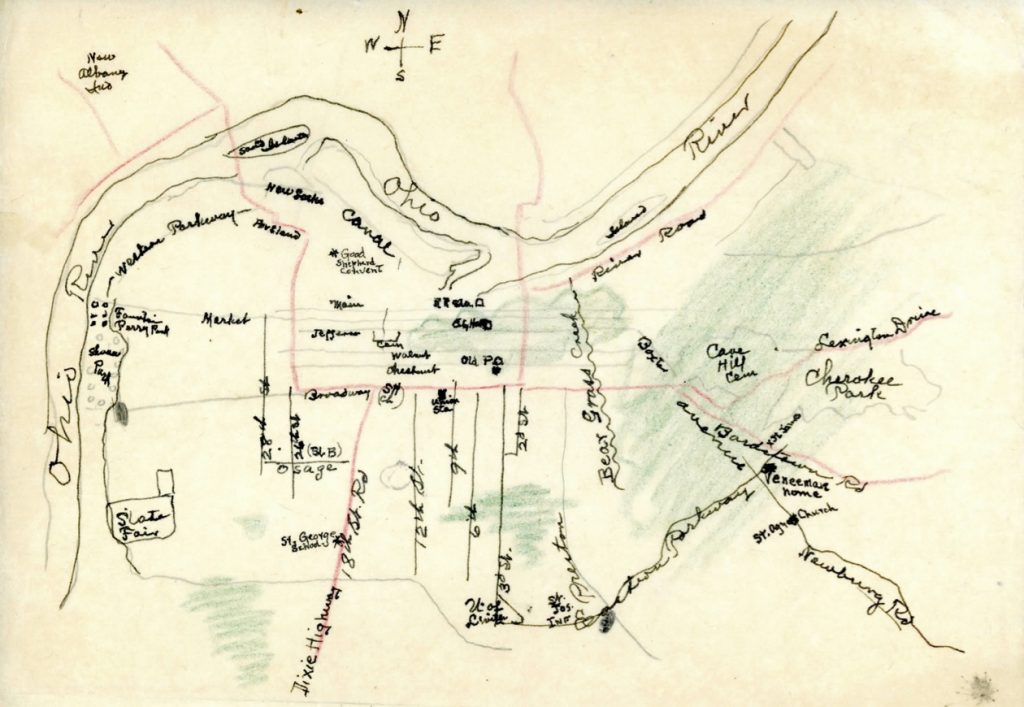
The annals for St. Benedict’s tell of the sisters’ experience leaving their convent by boat: “Our journey of four blocks amid the floating ice reminded us of Washington’s crossing the Delaware, for the men struggled to break the ice to make way for the boat.” When they reached dry ground, a man offered to drive them to their destination, St. Joseph Infirmary. But the route was cut off by water, so he brought them to the Ursuline convent at St. George’s, where he was a parishioner. “When we reached the sisters’ home, the gentleman rapped loudly on the back door and announced excitedly ‘I have a load of sisters here. What shall I do with them?’ ‘Bring them in,’ was the reply.”
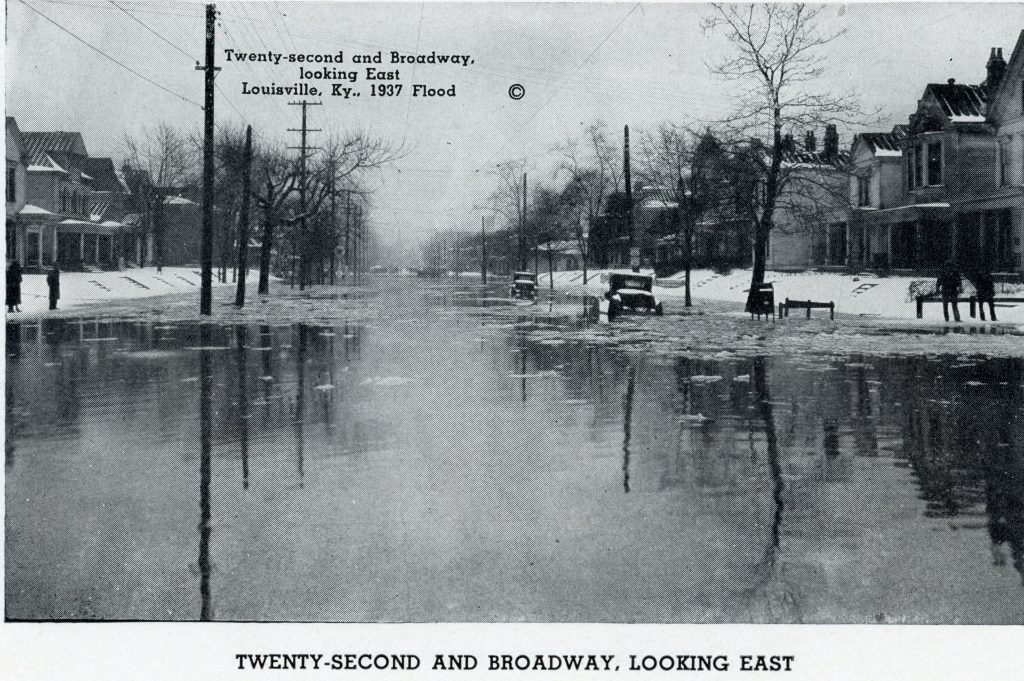
As the days of rain wore on, the train and buses were still not operating, so the sisters were transported to the Motherhouse in vehicles under the direction of Robert Edelen, a state highway official who was the father of Sister Robert Leona Edelen SL. The Motherhouse Annals describe the arrival of one group of sisters from Louisville: “We fairly flew to meet our Sisters and were a bit startled to find them running towards us looking like Maryknoll Sisters – their soft street veils draped about their heads with no white lining. Explanation: It was pouring rain when they were put in boats to leave St. Benedict’s and they knew not whether their boat would be capised [sic] – so they donned their street veils instead of their house veils and have since been thus habited while with the kind Ursuline Sisters of St. George’s School. They really looked very nice and religious.”
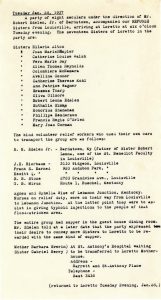
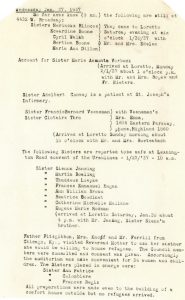
But Sister Nerinckx and the four other sisters designated to stay at the Broadway campus faced a quandary. The rain showed no sign of stopping, and the water was about to reach the first floor of the chapel, where the Blessed Sacrament was kept. Only a priest could touch the sacrament, and their pastor, Rev. Francis Martin, could not be reached. Finally, Sister Nerinckx was able to speak with the bishop, Most Rev. J. X. Floersch, who told her to move the sacrament to a safe place on the second floor, and in case of evacuation, to take it to the nearest church. Sister Edwardine Boone SL recalled: “The Bishop asked if there was anyone near us and I told him that the boat service on Broadway was much better than the car service had ever been. We stood at the windows and watched all our neighbors sail away.”
The Bishop asked if there was anyone near us and I told him that the boat service on Broadway was much better than the car service had ever been. We stood at the windows and watched all our neighbors sail away.”
Sister Edwardine Boone SL
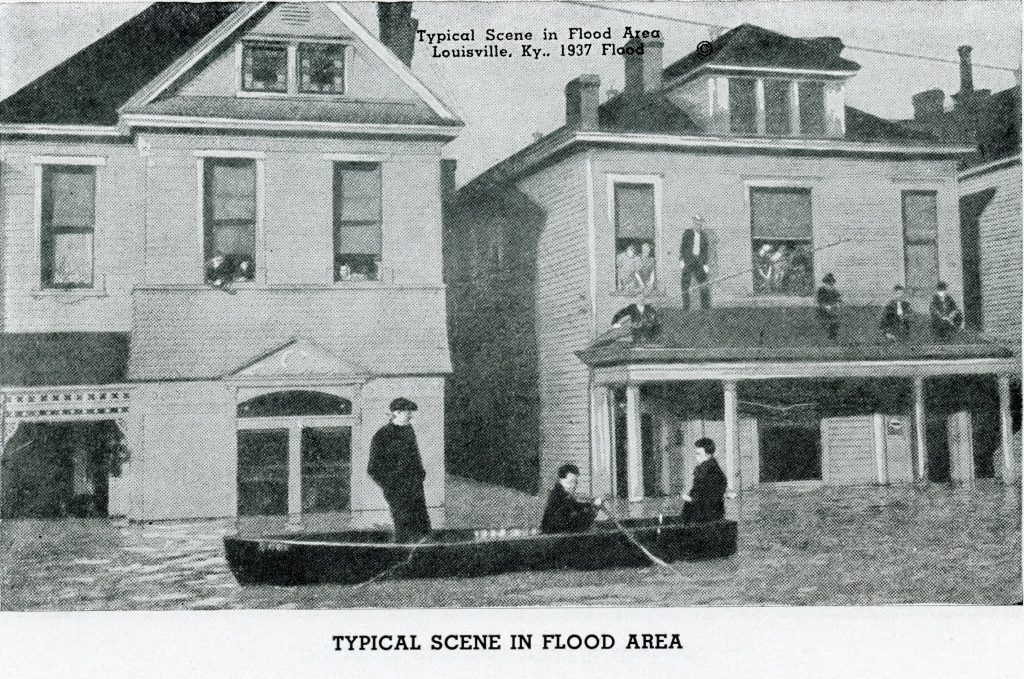
The sisters at Broadway were stranded for about a week, with the convent’s phone line and radio cut off, and the water level reaching several feet into the first floor. Following the bishop’s instructions, the sisters moved the sacrament to a second-floor filing cabinet, which served as a temporary altar. The Coast Guard was able to bring food to them daily through a trellis on one side of the convent. However, because the phone line was dead, Mother Superior Olivette Norton had no idea whether the five sisters at Broadway were safe, or if they had left to find shelter elsewhere. There was a rumor they had gone to Indiana with Franciscan Sisters, but this was false. Finally, on the morning of Saturday, January 30, Mother Olivette discovered the remaining sisters were still at Broadway, and sent Robert Edelen out with a group of marines to retrieve them and bring them to the Motherhouse.
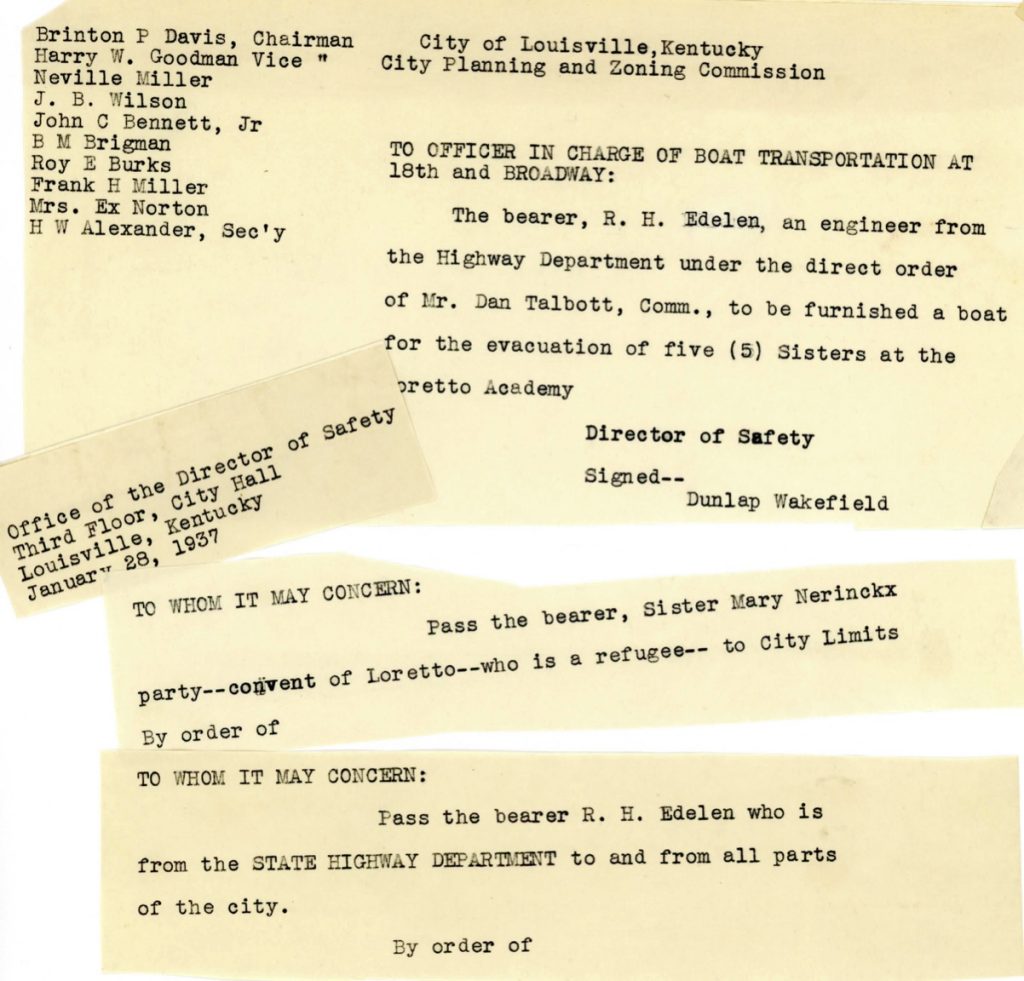
When Robert and the marines arrived at Broadway, Sister Nerinckx did not want to leave, because relief volunteers had told her they were safer in the convent at that point. But when she heard Mother Olivette had sent for them, she quickly complied. According to the Motherhouse Annals, Sister Nerinckx “heard officers voices saying they were ordered to come for the Sisters. ‘Whose order?’ inquired Sister Mary Nerinckx. ‘The Mother General’s’ was the response. …Two Sisters were conducted across the flood waters (urns on porch were inverted for their stepping stones) but some of the Sisters were carried out bodily by the men.”
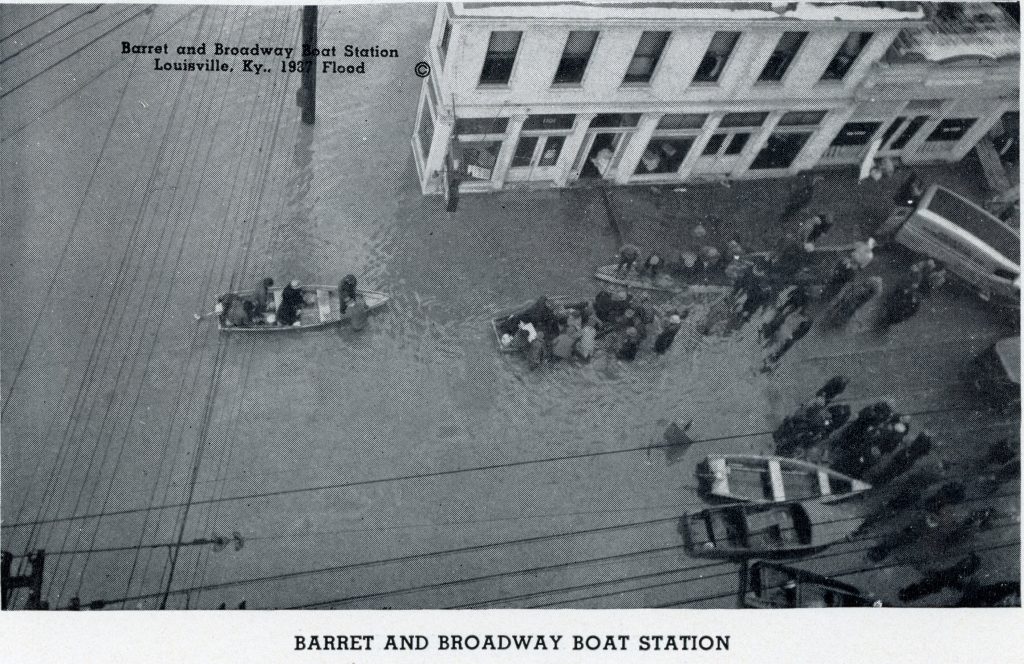
A news camera recorded the procession as the sisters carried the sacrament onto the boat and were rowed by marines for several blocks, until they reached dry land. A truck brought the sisters to the Sacred Heart rectory, where they passed the sacrament to the priest there, Rev. P. Walsh. Finally, on the evening of January 30, the sisters made it to the Motherhouse, reuniting with the rest of their fellow Louisville sisters. According to the annals, “Our supper was just over and our Visit made and prayers said – when the cry of joy was uttered over the arrival of another group – the long lost Sisters of Loretto High School.” A poem (author unknown) was written about the experience of being a flood refugee at the Motherhouse:
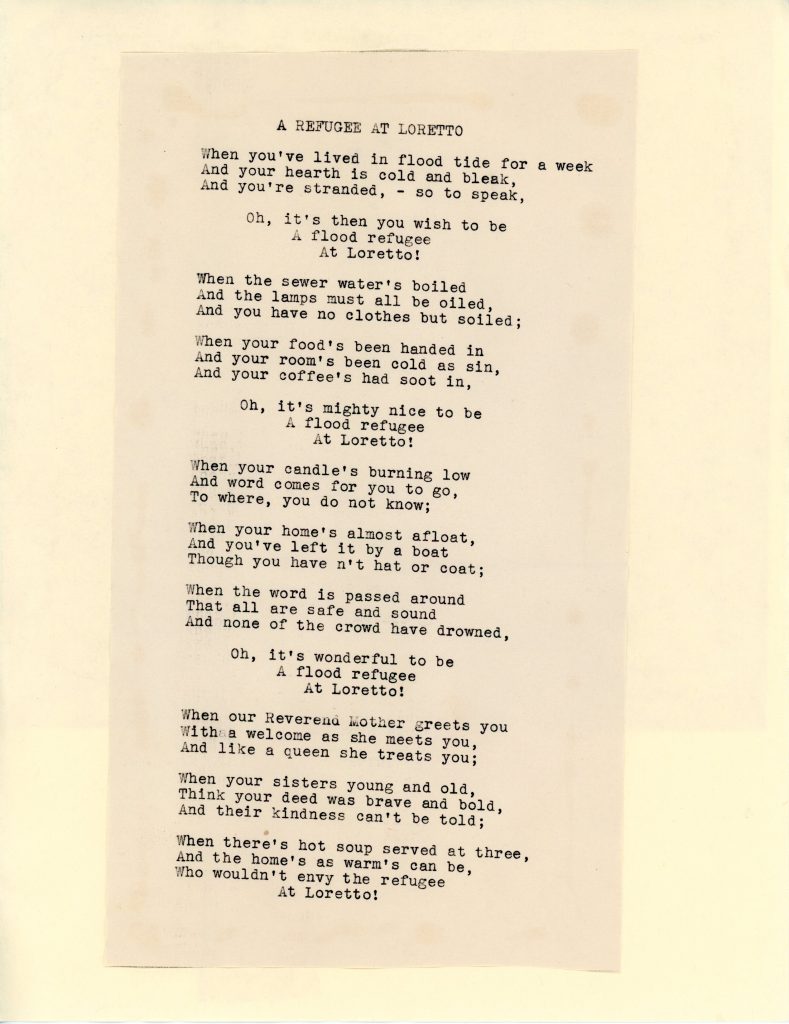
It was mid-February before the sisters returned to Louisville and reopened their schools. The damage caused to the Broadway buildings totaled $15,000. Years later, Sister Nerinckx said carrying the Blessed Sacrament to safety during the flood was the greatest privilege of her life. That tale was immortalized as a comic book story written by Sister Lilliana Owens SL.
